You Will Love This Easy Sourdough Pizza Crust Recipe That Gives You A

-
You will love this easy sourdough pizza crust recipe that gives you a pizza full of flavor and the goodness of sourdough.
I have received so many requests for a sourdough pizza crust recipe.
Since I already bake a lot with sourdough, I then set out on a quest to come up with a recipe that is as easy as delicious.
In the process, my family got to eat a lot of pizza. Don’t get me wrong, they were not complaining. I was also able to play with various types and ideas for toppings. I mean, you can only eat so many Pizza Margheritas, right?
Today, I am both proud and excited to share my sourdough pizza crust recipe with you!
This post contains affiliate links, which means I make a small commission at no extra cost to you. You can read my full disclosure here.
Why you’ll love this recipe
I am all about creating simple and flexible recipes. This is another one of them!
There are only 5 ingredients in this recipe that you probably already have in your kitchen. I will give you some ideas for variations and substitutions below.
Also, you are in total control of the fermentation time! Depending on your schedule and desired health benefits, you can let this pizza dough ferment shorter – or longer!
You can even make it ahead of time and keep it for later use.
Last but not least, this sourdough pizza crust is absolutely delicious! Again, my family was not complaining when we were having pizza for so many dinners in a row.
What are the ingredients for this sourdough pizza crust
You only need 5 common ingredients for this delicious sourdough pizza crust:
- flour: I am usually not very picky about my flour as long as it is organic. For this recipe, I have been using an all-purpose white flour.
- salt: this ingredient has two purposes in this recipe. First, it gives your pizza crust more flavor. But also, it helps curb the sourness of the sourdough.
- yeast: even though this is a sourdough pizza crust, I am adding a little bit of instant or dry yeast. It helps the crust rise and makes it a bit more fluffy.
- olive oil: I really like the vegetal taste of olive oil which goes very well with any pizza. I played a bit with the amount of olive oil and found the right amount to make this pizza crust a bit more elastic.
- sourdough starter: this is the star in this recipe. If you don’t already have an established sourdough starter in your kitchen, you can learn how to easily make one. While you can make a traditional pizza crust with yeast only, adding sourdough to it gives it that complex taste that we love so much.
I know that you can make a wonderful pizza crust with very minimal equipment but here is what I recommend for making the job easier for you:
- Kitchen Aid stand mixer: yes, you can perfectly knead this sourdough pizza crust by hand. Since I already own a Kitchen Aid stand mixer, I love to put it to good use. It really helps blending all the ingredients and kneading the dough. The latter facilitates activating the yeast and developing the gluten.
- beeswax wrap: when fermenting my sourdoughs for any length of time, I like to do so in a non-reactive bowl. I have the perfect size glas bowl that I then cover with one of my beeswax wraps. Since they are not airtight, they allow gases escape that form during fermentation.
- rolling pin: maybe you are one of those people who can work and stretch a pizza dough over the backs of their hands. I am not one of them. Therefore, I use a wooden rolling pin to roll out my sourdough.
- wooden pastry brush: if you don’t want to use your hands spreading olive oil on your sourdough pizza crust, you will find this pastry brush very helpful.
- 12.5″ cast iron skillet: I feel like sourdough and cast iron are made for each other. Baking this sourdough pizza crust in a cast iron skillet is a great method.
- leather handle: I love using this leather sleeve with kevlar interior for when my cast iron skillets get very hot or when removing them from the hot oven.
- half baker’s sheet: alternatively you can bake your sourdough pizza crust on a cookie sheet which works just as well.
- silicone baking mat: I love using my silicone baking mats that fit perfectly on my half baker’s sheets. It really cuts down on clean-up time and makes the pizza come off without any scraping.
How long you let the pizza dough ferment will depend on your desired outcome.
If you are interested in the complex, deeper flavor of sourdough it might be enough to let your dough ferment for about 4 hours.
On the other hand, if you are looking to get the full health benefits of sourdough, you will want to let it ferment longer. You see, the bacteria in sourdough sort of “pre-digest” the gluten and make it easier for us to digest. For that to happen, your sourdough needs to ferment at least 8 hours.
I have often let my sourdough ferment in the fridge for up to 24 hours and have really liked the results and flavor.
- Either the night before or on the morning of the evening when you want to bake your sourdough pizza, start making the dough.
- In a medium sized bowl or the bowl of your stand mixer, combine 3 cups (300g) of flour, 1 ½ tsp of salt, and 1 tsp of instant or dry yeast. Stir the dry ingredient to combine.
- To this bowl add 2 tablespoons of olive oil, ¼ cup (90g) of sourdough starter, and ¾ cup (180 ml) of warm water. I like to add ½ cup of water first and add the remaining ¼ cup later, if needed. You want this dough to be on the slightly sticky side but not so much that it sticks to your hands.
- Either with your hands on a work surface or with the dough hook attachment of your stand mixer, knead the dough for 5-10 minutes.
- Form the dough into a ball and place it in a non-reactive bowl. Lightly cover the bowl with a beeswax wrap or other lid.
- Let the dough rest in a cool kitchen on the counter or otherwise in the refrigerator for at least 4 hours. For best results, let the dough rest for 8-24 hours.
- Remove the dough from the bowl and transfer it to a lightly floured work surface. Cut it in half for two 15″ pizza crusts or in 3 equal portions for 3 12″ pizza crusts.
- With a rolling pin, roll the pizza dough out into disks.
- I like to brush some olive oil onto the pizza dough with a pastry brush. This helps your pizza not getting soggy when adding toppings. It also give the pizza crust a nice crunch if you’re baking it blind.
- You can bake this crust blind (see below how to keep it for later) or add your favorite toppings (also see below).
- Bake at 450˚-500˚F until the cheese is bubbly and golden-brown.
Here are three different ways to bake your pizza:
- I think the most traditional method for baking any pizza is using a pizza stone. We have a lava stone that we often use and it works great!
- Since most people already have that, baking your sourdough pizza crust on a cookie sheet is very easy. I have done that plenty of times. When I do, I like to use a silicone baking mat. As I said before, it helps with removing the pizza from the baking tray and makes clean-up a snap.
- My favorite method for baking this sourdough pizza crust, however, is using a 12.5″ cast-iron skillet. For that, I preheat the skillet on the stove. At the same time, I make sure to have all my toppings ready to go (if using). Then I carefully place the rolled out pizza dough into the skillet. The bottom of the crust will be baking while you’re adding your toppings. Our Ilve Nostalgie stove’s broiler is very powerful so I turn that on before I am adding the toppings. You can also turn your oven to 450˚-500˚F (230˚-260˚C). When the oven is hot, place your skillet in the oven for about 7 minutes or until the cheese is bubbly and golden-brown. If you would like to bake your sourdough pizza crust “blind”, prick it with a fork a few times. Then you simply bake it until the top is dry and slightly browning.
In short, yes!
The easiest way is to prepare the pizza crust. Then you will want to bake it “blind” (without toppings). Once cooled off, you can place it in a ziplock or other plastic bag, close it, and freeze it.
When you are ready to use it, simply take it out of the freezer, add your toppings, and bake it like you normally would.
While I feel like this recipe is perfect as it is, here are some ideas for variations and substitutions:
- flour: Even though I have not tried it myself yet, I can imagine that you could use some portion of whole wheat flour or a spelt flour.
- olive oil: you can use other oils for this recipe, such as canola oil, avocado oil etc. I have not tried it but I think you could use butter, lard, or tallow as well.
- yeast: if you don’t have instant or dry yeast around, you can probably omit it. In that case, I would let the dough ferment on the kitchen counter rather than in the refrigerator.
We love a traditional Pizza Margherita with just tomatoes, mozzarella, basil, and olive oil. You can then add additional toppings.
More recently, I was thinking about non-traditional pizza toppings.
Here are my 2 favorite types of toppings:
- Kale Pizza: kale is all the rage and wonderful as a topping on a sourdough pizza crust. First, I spreaded some basil pesto on the crust. Next I placed a good handful of chopped kale on the pizza. With some testing, I find that mozzarella is the best cheese for a kale pizza.
- Onion Pizza: my husband absolutely loves onions and wants to eat them all the time. Especially, caramelized onions. So I brushed some olive oil on the sourdough pizza crust, added a bunch of caramelized onions on top, and sprinkled crumbled goat cheese over it. This is such a surprisingly good recipe! Try it!
Sourdough Skillet Cornbread
Sourdough Crackers
No-Knead Sourdough Bread
Sourdough Life-Changing Bread
German Whole-Grain Sourdough Bread
Pumkpin Sourdough Bread Pudding
Sourdough Pasta
KitchenAid stand mixer
Rolling pin
Wooden pastry brush
12.5″ cast iron skillet
Leather sleeve for cast iron
Ilve Nostaglie stove
Half baker’s sheet
Silicone baking mat
You Will Love This Easy Sourdough Pizza Crust Recipe That Gives You A
Recipe details
Ingredients
- 3 cups flour
- 1 1/2 tsp salt
- 1 tsp yeast
- 2 TBSP olive oil
- 1/4 cup sourdough starter
Instructions
- Either the night before or on the morning of the evening when you want to bake your sourdough pizza, start making the dough.
- In a medium sized bowl or the bowl of your stand mixer, combine 3 cups (300g) of flour, 1 ½ tsp of salt, and 1 tsp of instant or dry yeast. Stir the dry ingredient to combine.
- To this bowl add 2 tablespoons of olive oil, ¼ cup (90g) of sourdough starter, and ¾ cup (180 ml) of warm water. I like to add ½ cup of water first and add the remaining ¼ cup later, if needed. You want this dough to be on the slightly sticky side but not so much that it sticks to your hands.
- Either with your hands on a work surface or with the dough hook attachment of your stand mixer, knead the dough for 5-10 minutes.
- Form the dough into a ball and place it in a non-reactive bowl. Lightly cover the bowl with a beeswax wrap or other lid.
- Let the dough rest in a cool kitchen on the counter or otherwise in the refrigerator for at least 4 hours. For best results, let the dough rest for 8-24 hours.
- Remove the dough from the bowl and transfer it to a lightly floured work surface.
- Cut it in half for two 15" pizza crusts or in 3 equal portions for 3 12" pizza crusts.
- With a rolling pin, roll the pizza dough out into disks.
- I like to brush some olive oil onto the pizza dough with a pastry brush. This helps your pizza not getting soggy when adding toppings. It also give the pizza crust a nice crunch if you're baking it blind.
- You can bake this crust blind (see below how to keep it for later) or add your favorite toppings (also see below).
- Bake at 450˚-500˚F or under the broiler until the cheese is bubbly and golden-brown.






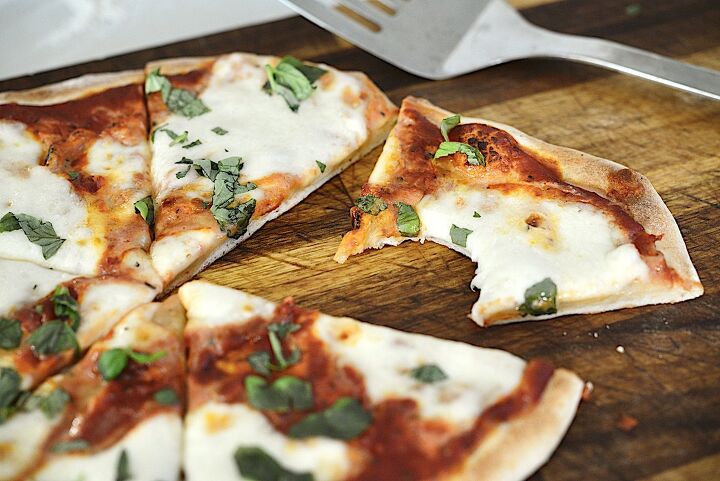




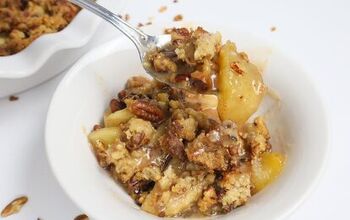






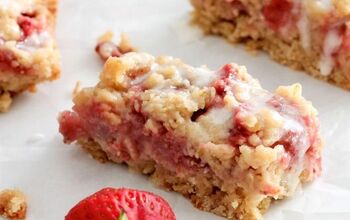

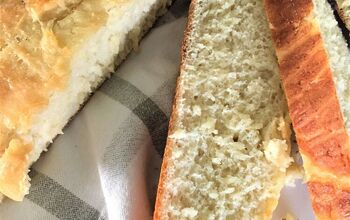



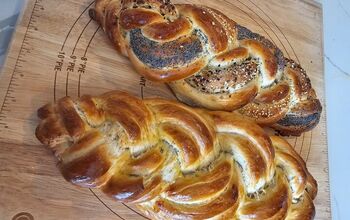
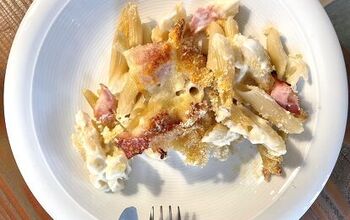

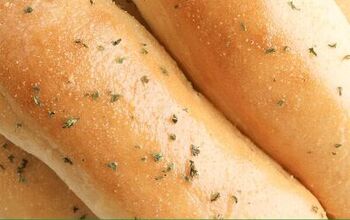


Comments
Share your thoughts, or ask a question!